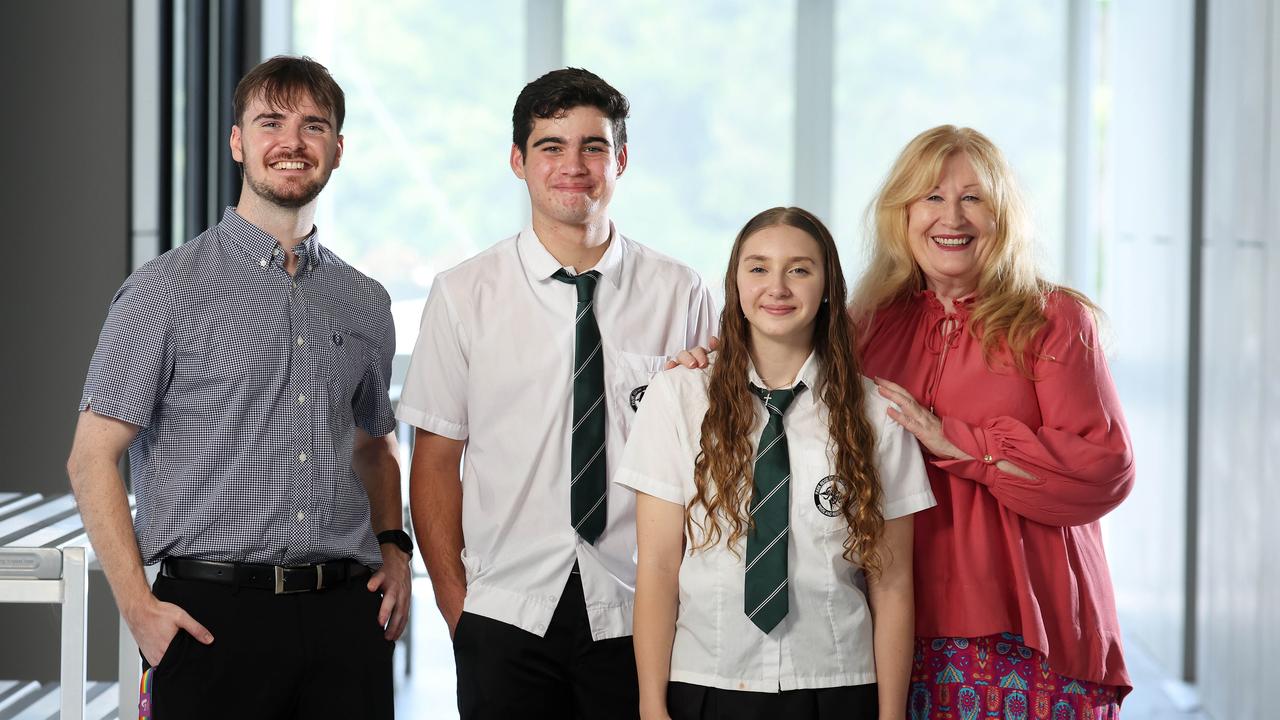‘It was pretty nasty’: Meaghan Scanlon opens up about ‘confronting’ family tragedy
Meaghan Scanlon has opened up on her relationship with fellow MP Mark Bailey and a childhood tragedy that shaped her rise in Queensland politics.
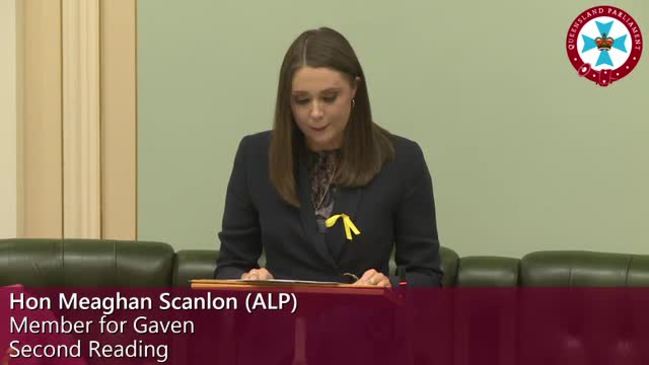
QWeekend
Don't miss out on the headlines from QWeekend. Followed categories will be added to My News.
On the ground floor of Queensland’s Parliament House in Brisbane’s CBD, you will find a hallway hidden from the public that is lined with the portraits of the state’s earliest premiers. It’s not a very big corridor. It’s not very well lit either. The floor is adorned with a red and regal carpet and the doors are made of dark and dense timber. Walking through the corridor is like stepping back in time to the 1800s, when the very premiers whose portraits now hang on the wall were in charge of the state.
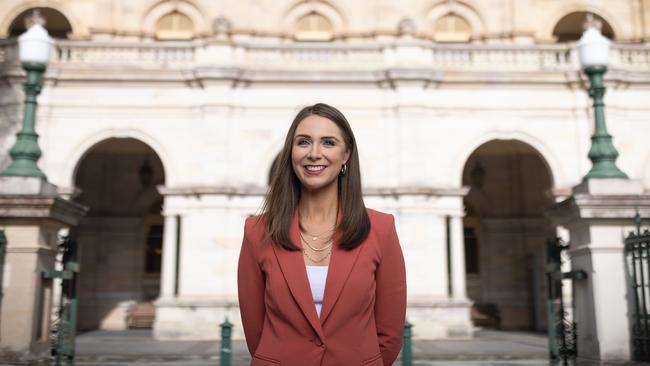
It was along this corridor – during her first term in parliament – that Labor MP Meaghan Scanlon would walk to her office every day the House was sitting. Some of the men – and they are all men – peering down at her from their golden frames oversaw the state at a time when women could not vote, let alone sit in parliament. The fact the chamber she now sits in was once dominated solely by men is not lost on Scanlon – who made history in 2017 when she became the youngest woman elected to the Queensland parliament.
“Being a … first-term MP at the age of 24 walking past (those portraits), you cannot help but kind of go, ‘this is quite different’,” she says.
“While I feel lucky in that we do have actually a lot of women in our caucus that’s still relatively new.”
Scanlon, according to political insiders, is a rising star in her party. She stands out as a future leader.
And, now 29 and in her second term in office, she stands out in a parliament where the average age of MPs is 50. So much so that on the day she was sworn into parliament following her election in 2017, a parliamentary staff member mistakenly thought she was the family member of another MP.
Meaghan Alana Jenkins Scanlon’s story began 70km away, down the M1, in the Gold Coast suburb of Nerang. This was where she was raised, and it is now the community she represents as the Member for Gaven.
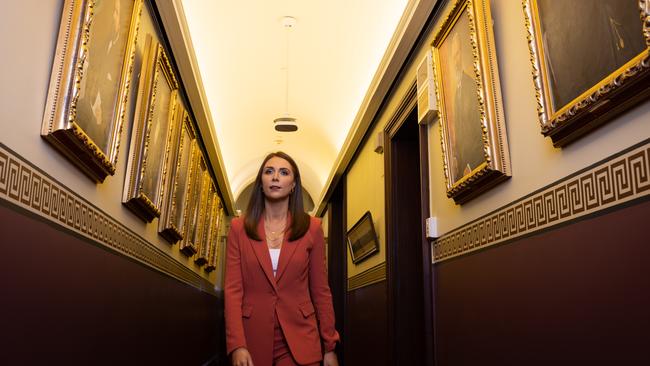
Scanlon’s Nerang electorate office doesn’t have portraits of former premiers on the walls but it does have photos of an array of left-wing political leaders and icons such as former Labor prime minister Julia Gillard, firebrand US congresswoman Alexandria Ocasio-Cortez, and revered former US Supreme Court Justice Ruth Bader Ginsburg.
As we make the journey to a nearby cafe for our interview, Scanlon says her upbringing was “pretty normal”.
There was ballet on Saturdays, church on Sundays with her “very much Catholic” grandmother (although, these days Scanlon classes herself as an atheist), and school at Guardian Angels Primary School at Ashmore. And despite her meteoric rise to the top levels of government, Scanlon suggests politics wasn’t discussed often at home with her parents, Margaret and Phil.
“(Mum and Dad) were interested in politics, but they weren’t activists as such,” Scanlon recalls.
“They were both strong unionists – particularly Mum.”
Margaret grew up in a public housing home in the Victorian town of Moe with her parents and five siblings. She moved to the Gold Coast where she met Phil at the Benowa Tavern in 1986.
Phil was raised in Inala on Brisbane’s southside after he immigrated to Australia as a young child from England. The couple married in 1988, and they welcomed Meaghan in 1993. Then came along their son, Callum, in 1996.
When Scanlon was in primary school, Phil was diagnosed with melanoma. Scanlon, then 7 or 8, accompanied her dad to a Nerang medical centre, where a small freckle in the middle of his forehead was excised.
The cancer was thought to have been removed. But, in devastating circumstances, it spread – with a secondary melanoma detected months later. The cancer would eventually wrap around a lymph node which also had to be removed, leaving the left side of his face without any function. After a long fight, Phil died on February 7, 2007, when Scanlon was only 13.
“It was pretty nasty over a long period of time,” Scanlon recalls. “Then when he died, it was obviously quite confronting and difficult. Mum was largely by herself with two children – one (Callum) who had Down syndrome, and that already required a whole lot of additional resources and attention. It wasn’t an ideal thing to happen to a young person growing up – but you just deal with whatever gets thrown at you.”
It was in Year 7 that Scanlon started to find her political radar.
She remembers making that pilgrimage to Canberra that so many young Australians do, and the impression Parliament House left on her.
“I can remember being interested in the political process and policy at that stage – but again had no real ambition to become a Member of Parliament,’’ she says.
On the 2007 election day that swept Kevin Rudd into power, the then 14-year-old Scanlon was handing out how to vote cards.
With this early interest in politics, Scanlon almost seemed destined for a role in government.
But she initially pursued a much different dancing career.
Scanlon finished her dancing studies at Aquinas College high school a year in advance – allowing her to spend a day a week at a dance studio in Brisbane in Year 12. But, in the end, she decided on a different career. In her final year of schooling, she became interested in law.
Studying law is a well-trodden path many politicians have taken on the road to power.
But as Scanlon learnt early on, lawyers can only apply the laws that are created by those in power. She began studying law at Griffith University in 2011 and wasn’t involved in student politics.
When she graduated at 21, she went to work at Susan Moriarty & Associates. Scanlon says she enjoyed the experience, but her career as a practising lawyer lasted only about a year as she grew frustrated by the limitations of the law.
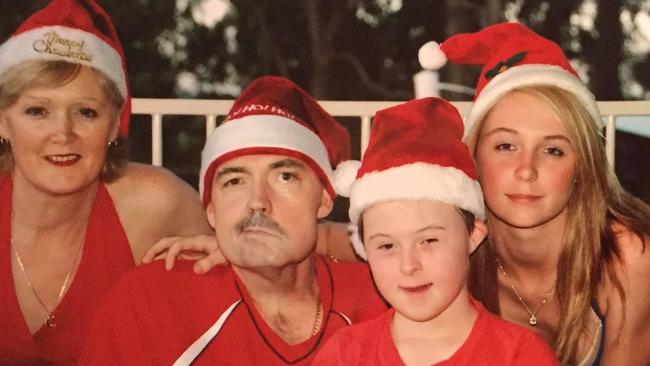
“I’ve always been interested in policy and reform and how you can use those mechanisms to help someone,” she says. “So law felt like the right place to do that. And I think it is a good place to do that. But then when I did it, I got more frustrated because you’re confined by what the law says and can’t necessarily change the law.”
Only politicians have that power to change the law. And so, at 23, Scanlon made the bold move to enter the political arena as Labor’s candidate for the electorate of Fadden at the 2016 federal election.
She challenged incumbent MP Stuart Robert in a seat that has almost always been held by the Liberals. Scanlon knew she would very likely lose, but says her run was about standing up for what she believed in.
“I’m a feminist and I was reading lots of books at the time around how women should put their hands up,” Scanlon says. “And we were looking for a candidate (for Fadden) … and a couple of people in our branch were like, ‘Oh, you should run.’ And I kind of said, ‘No.’ And then I went, ‘I can’t actually be saying that I’m a feminist and tell people to put their hand if I’m then not going to do it myself.’ Scanlon lost in a landslide, but she learnt a lot: What it was like to be at the centre of a campaign, how to deal with the media and how to speak in front of crowds. It prepared her for what was to come in Gaven a year later.
Scanlon won the Nerang-based electorate of Gaven by 0.7 per cent at the 2017 state election. It was an uphill fight. Before she squared off against LNP incumbent Sid Cramp, she had to win a preselection ballot.
Scanlon’s small and scrappy campaign was run from her mum’s house. Gaven was not on the radar as a target seat for Labor, which meant Scanlon had few resources. On election night, the results showed it was going to be close. Scanlon just scraped over the line with 378 more votes after preferences than her LNP opponent.
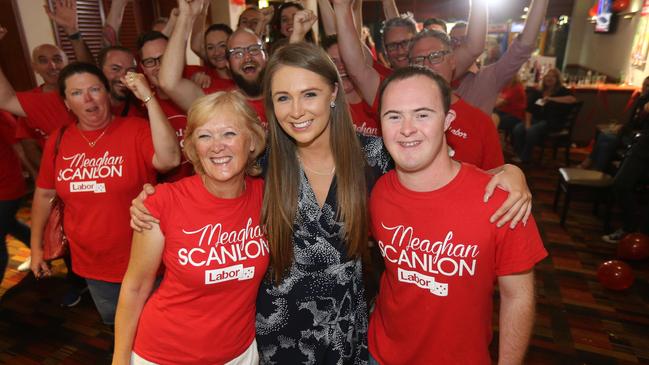
It would make her seat the third most marginal in the parliament. But a win is a win and Scanlon was on her way to Brisbane, with the then-24 year old becoming the youngest woman elected to the state’s parliament.
“It’s not something where I kind of go, ‘Oh, this is this incredible thing,’” she says.
“We worked hard and we got elected. I don’t feel like it’s out of the realm of possibility or anything particularly special. I do hope someone beats my record at some stage.”
Scanlon doesn’t feel like she missed out on her youth because of her early entrance into politics.
“I felt like I got that out of my system in the first couple of years of uni,” she says.
“A lot of my friends have got children and things now. I look at their lives and they’re not particularly different to mine in terms of going out and doing anything that I can’t do. I’ve never been one to want to go nightclubbing or anything too often.”
As Scanlon took her seat in the state parliament for the first time – with its soaring ceilings, its chandeliers, and the ever-watchful media – she admits it was daunting. Question Time can be loud and rowdy.
“You’ve got the Premier, all these ministers. The Opposition who are there almost day in and day out to try and bring you down,” Scanlon recalls. “But it was exciting. You get to be in a House where you get to change laws.”
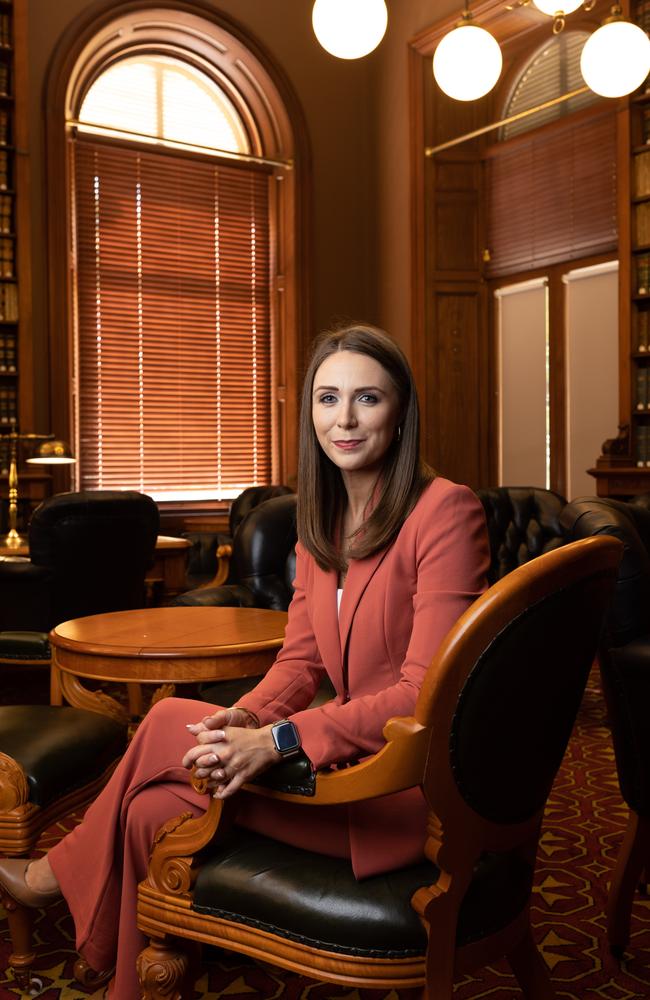
Scanlon’s rise through the ranks of the government was swift. She was immediately elevated to the ministry as Assistant Minister for Tourism Industry Development, with Labor veteran Kate Jones overseeing her as Tourism Minister.
The role seemed like a natural fit for Scanlon, who remains the only Labor MP from the LNP-dominated Gold Coast.
Scanlon cites the decriminalisation of abortion and the introduction of wage theft laws as significant reforms notched up by the Palaszczuk government in her first term as an MP. Ultimately though, events were overshadowed by Covid.
The health emergency became a political flashpoint as divides were drawn over the Palaszczuk government’s response. Borders were slammed shut as cases escalated interstate, dividing families and delivering a hammer blow to local tourism operators – many who lived and worked on the Gold Coast.
Like most Queenslanders, Scanlon watched Premier Annastacia Palaszczuk as she delivered the latest health responses.
She was on the edge of her seat as each announcement was made, nervous that the border closures would see her lose her seat after just one term.
“I think I would be lying if I said that I wasn’t concerned,” Scanlon says. “And I had lots of people who came up and said, ‘I’m not voting for you because of this decision.’ And that’s hard.”
Scanlon stands by the border closures, insisting the government was making decisions in response to health advice. The LNP campaigned hard to win back Gaven at the 2020 election – singling it out as a target seat. But they failed, with Scanlon boosting that tiny 0.7 per cent margin to a healthy 7.7 per cent lead.
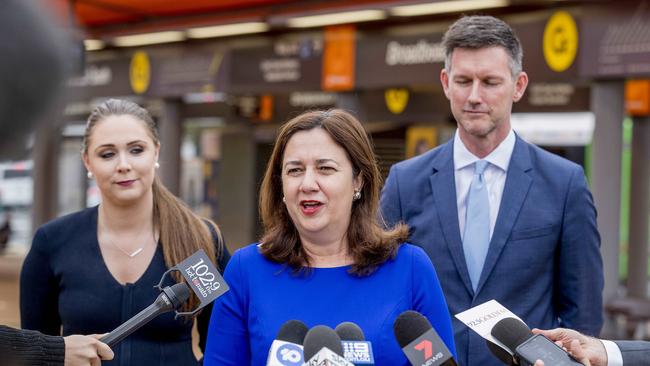
On December 10, 2020, Scanlon settled into a red chair in the Queensland parliament’s red chamber flanked by staff and bureaucrats.
Looking back at her from across the room were several LNP MPs, who were geared up to pepper her with questions.
It was her first big test in her new role as Minister for the Environment and the Great Barrier Reef and Minister for Science and Youth Affairs. She had only been sworn in to the job a few weeks earlier, and now she was squaring up for her first budget Estimates.
“I would be lying if I said I was not extremely nervous for many, many months,” Scanlon says as she reflects on her early days. “My portfolio is massive in terms of the breadth of policy.”
Scanlon’s appointment to cabinet was another history-making moment. At 27 she became the youngest cabinet minister in Queensland’s history – breaking the previous record held by Kate Jones. For the first time in a long time – as Scanlon noted when she got the job – the almost 40 per cent of Queenslanders under the age of 30 had someone representing them at the cabinet table.
Scanlon says she has, at times, been unfairly underestimated because of her age. She recalls meetings with stakeholders where they would tend to talk to her older chief of staff rather than her.
“I noticed it even just going into rooms … and they still ask who I work for,” Scanlon reveals. She wants other women to feel confident that they can run for office. But she still warns them about the challenges – pointing to the gendered attacks she has copped on social media. “There’s a whole range of examples where people aren’t quite ready for women to be in positions of power, but I think we’re evolving,” she says.
“I think people talk about women’s appearance more than they would talk about men’s appearance – particularly in politics.”
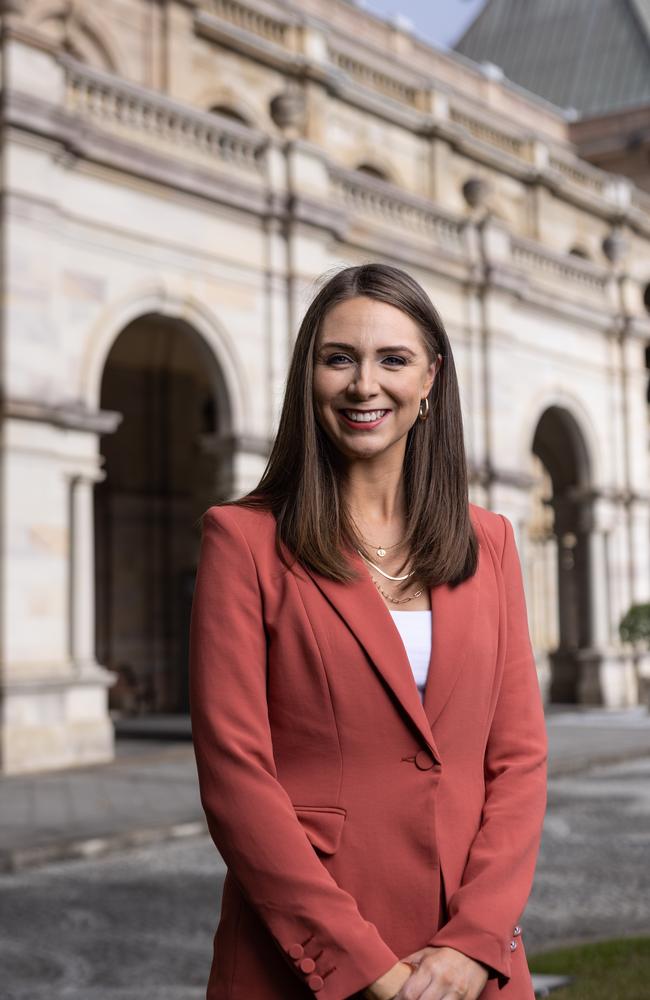
Two years on from that first Estimates appearance, Scanlon has settled into her role, ushering in significant law changes that will see single-use plastics stamped out in Queensland. She has overseen major conservation land acquisitions.
And she has signalled her ambition to turn Queensland into a “zero-waste society”.
Scanlon also wants to change the way the environment portfolio is looked at – putting more focus on the economic benefits.
“I think we’ve often looked at the environment as just a portfolio about protection and not about economic opportunity. And I think it can be both,” she says. In the last budget, she secured $262.5m in funding to expand protected areas.
Protecting the Great Barrier Reef is also at the top of her agenda. When asked if she is scared about the reef’s future, Scanlon says coral bleaching and the impacts of water pollution are obviously concerning.
“I think if we don’t change, the reality is that the reef will be in danger. That is why we all need to be doing everything we can … to try and protect it. Again, not only because of its important ecological value, but it supports a whole lot of tourism jobs in particular.”
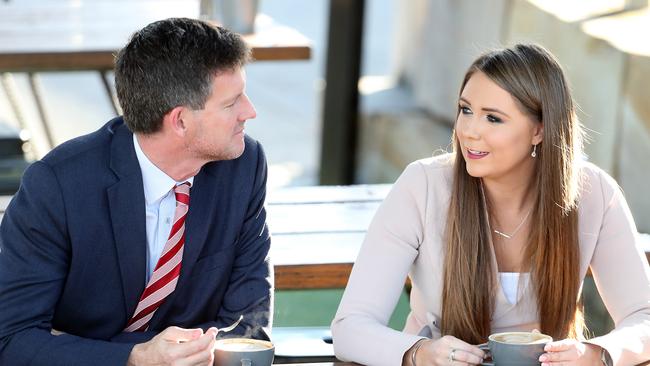
Scanlon is frank when the topic of her relationship with fellow cabinet minister Mark Bailey is broached. She politely indicates she may not answer every question (although she does). It’s something she prefers to keep private.
“Which would be the case in any relationship I’m in,” Scanlon says.
“There are some things that you want to keep a little bit more private, but I do accept most of my life is up for scrutiny.”
The pair has been an item since before Scanlon was elected. They met while Bailey was the state’s energy minister and Scanlon was a Labor branch secretary on the Gold Coast. She sent a letter to him and then-federal Labor spokesman for climate change, Mark Butler, asking about renewable energy policy on behalf of her branch. Bailey’s office arranged a time for him to meet with the group.
“It’s not a particularly exciting story,” she says, as she laughs about how “decarbonisation” brought them together. Scanlon recognises their relationship is “different”, with both of them sitting at the cabinet table. Bailey is now Transport and Main Roads Minister.
“In some ways I think it also is not that different,” she says.
“It’s hard to do this job if your partner doesn’t understand the enormous hours involved, the enormous expectations on you.”
Each of them lives in and represents very different electorates geographically – with Scanlon on the Gold Coast and Bailey in Brisbane where he holds the seat of Miller. Scanlon concedes they don’t get to spend a lot of time together with their busy schedules – insisting their jobs are their No. 1 priority. They don’t often talk about work though, when they do spend time together.
“Neither of us wants to talk about the intricacies of our portfolios,” Scanlon says. “It’s just more like you would talk to any partner about the news of the day.”
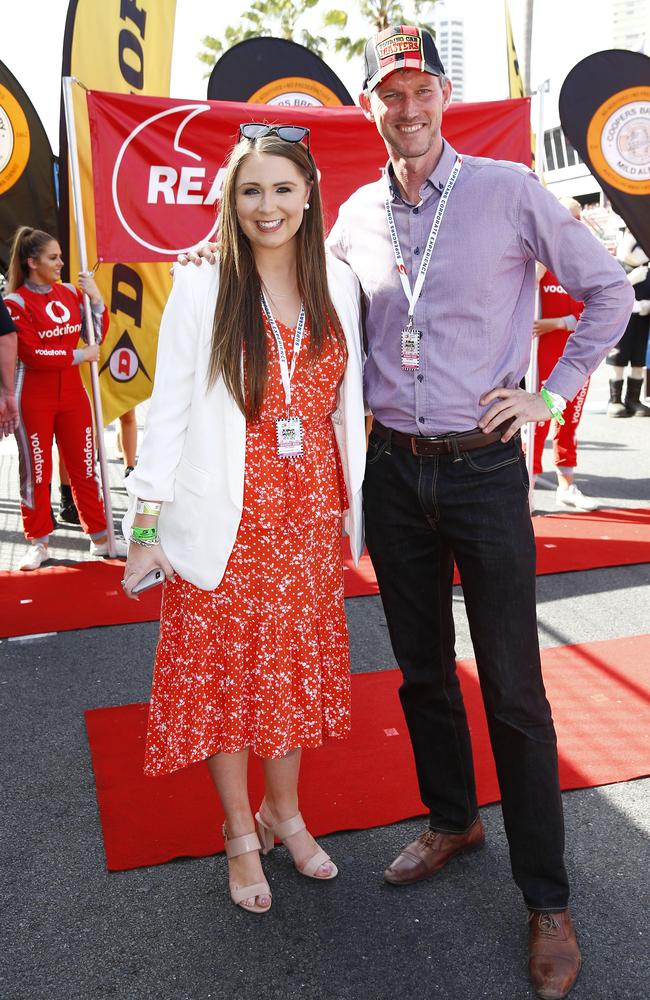
So, what does the future hold for Scanlon?
The woman whose record she overtook to become the state’s youngest minister – Kate Jones – says Scanlon is a “rising star”. “She is a great parliamentary performer, is across her detail, and widely consults … before she makes a decision,’’ Jones says.
Her former boss, Senator Murray Watt – now a cabinet minister in the Albanese government – says she’s a potential future leader of the party.
“She’s really smart and strategic. I think she’s really authentic. What you see is what you get. She’s definitely a trailblazer – both for young women but also for Labor on the Gold Coast.”
Scanlon stresses that becoming leader is not on her radar.
“I’m the youngest member at cabinet, so I’m content in the position I’m in and learning along the way,” she says.
Even if she never takes the reins of her party, Scanlon will have her name etched in the history books as a record breaker and a path maker for young women. And that’s no small feat.
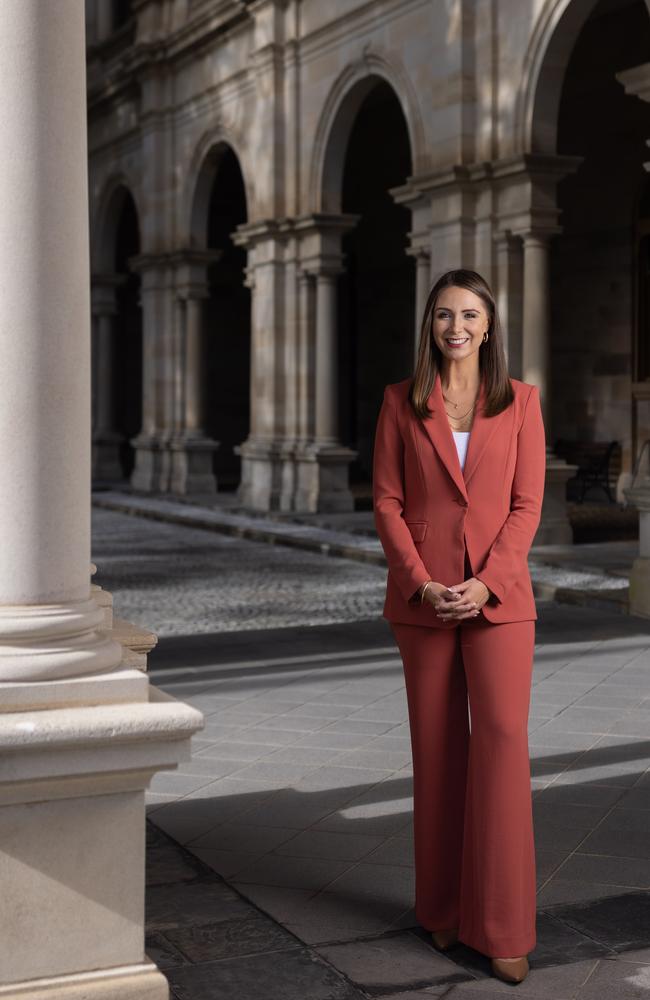
“I want other women to feel they can put their hand up,” she says. “And that every crack that each one of us breaks in the glass ceiling makes it that little bit easier for the next person.”




